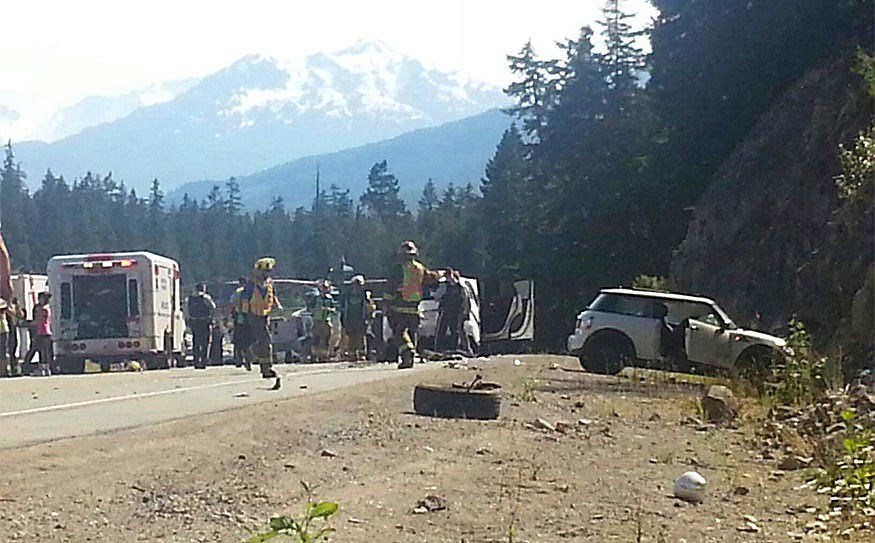The Insurance Corporation of British Columbia (ICBC) released its annual report on highway safety and traffic accidents last week, and statistically our highways are the safest they've been in the five-year reporting area, from 2008 to 2012.
Provincially, they registered roughly 260,000 crashes in 2012, which is down around 20,000 from the total in 2008. Casualty crashes — crashes resulting in injuries or death — were 54,000 in 2012, which is up from 52,000 in 2011, 51,000 in 2009, 49,000 in 2009 and 51,000 in 2008.
The Lower Mainland region, which includes Sea to Sky as well as Greater Vancouver, accounted for 170,000 of the total number of crashes in 2012, as well as 38,000 of the casualties.
There's also a statistic for injured victims, as some vehicles involved in casualty collisions may have several passengers. Provincially, 81,000 were injured in 2012, up from a low of 73,000 in 2009. The Lower Mainland accounted for 58,000 of the total.
Fatality numbers from 2012 are not available as there's a seven-month lag between the end of the year and when the Police Traffic Accident System and Coroner confirm deaths. As well, drivers injured in 2012 may pass away months after the initial accident.
However, fatalities from 2011 were released. Provincially there were 291 fatalities related to crashes in 2011, which is well below the five-year average of 357 and the high of 411 in 2007. In the Lower Mainland there were 84 fatalities in 2011, almost half the 158 reported in 2007. The 2011 number was also down significantly from 122 in 2010.
ICBC also provided several community snapshots. There was no snapshot for Whistler, but the Squamish report suggests that the community is safer as well.
In an average year there are 900 crashes in the Squamish region, which includes a long stretch of Highway 99, resulting in roughly 200 injuries. That's down almost 100 crashes since 2007.
The rate of stolen vehicles has also declined from a high of more than 50 in 2008 to less than 10 in 2011.
The Sea to Sky Highway Improvement Project upgrades in the run-up to the Olympics are being credited for the continued decline in accidents and injuries, as well as additional upgrades over the past five years. In addition, the new provincial laws regarding drinking and driving have also been credited with making highways safer.
The percentage of total fatalities related to speed dropped from 38 per cent in 2005 to 30 per cent in 2011; the percentage of fatalities related to impaired driving dropped from 31 per cent of 27 per cent; distracted driving fatalities have also dropped slightly since 2009's figure of 29 per cent to 27 per cent in 2011.
Facts and Figures
• Every $1 invested in road/highway safety results in a $5 savings in ICBC claims costs.
• Some 60 per cent of traffic accidents take place at intersections.
• Squamish's high-incidence crash intersections in 2011 were Cleveland Ave. and Highway 99 and Loggers Lane; Depot Road and Hwy 99; Mamquam Rd. and Hwy 99; Garibaldi Way and Hwy 99; Clarke Dr. and Hwy 99; Darrell Bay Rd. and Hwy 99 and Shannon Falls Park; and Hwy 99 and Stawamus Rd. and Valley Dr.
• Motorcyclists accounted for about 10 per cent of total fatalities in 2011 with 37 reported. That's below the five-year average of 42.
• Young drivers are becoming safer. In 2008 there were 38,000 incidents, 7,600 injuries and 48 fatalities for drivers aged 16 to 21, dropping to 33,000, 69,000 and 34 respectively by 2011.
• The most dangerous intersection in B.C. is at the Trans-Canada Highway at Brunette Avenue with 440 reports in 2012. The Trans-Canada off-ramp at Willingdon Ave. was second on the list with 320.




